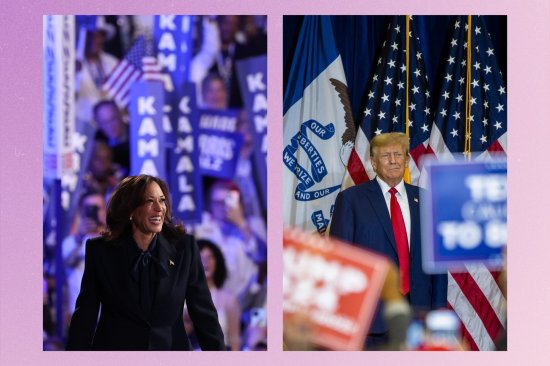
Mostly ads, but not entirely
This article is part of The D.C. Brief, TIME’s politics newsletter. Sign up here to get stories like this sent to your inbox.
If you want to understand the true battleground of the current political landscape, it’s useful to glance at where the presidential campaigns are putting their dollars. You could look at the federal election spending reports, or—if you’re in a swing state—just pick up your TV remote or smartphone.
On the Democratic side, 28 of the first 30 biggest expenses listed on the Federal Election Commision summary for Kamala Harris’ campaign are related to media buys and production—A.K.A. ads. On the Republican side, 20 of the 30 biggest GOP checks backing Donald Trump’s return to the White House are for paid media and mailers. Put plainly as told through invoices: campaigns are investing far more in what voters come across when they’re looking for entertainment or a distraction than sending someone to knock on their door for a chat.
[time-brightcove not-tgx=”true”]That priority is about to become far more apparent in the handful of swing states, where the final push toward Election Day is slated to see a half-billion dollars in advertising go live. The Harris campaign and allies have booked more than $330 million on TV and radio over roughly the next seven weeks. Trump’s team has booked a little less than $200 million. The disparity stems only partly from Harris’ superior fundraising. It’s also due to an early investment by the now-shuttered Biden campaign to book ad time on the stations in key markets months ahead of time, while Trump was still using much of his campaign’s coffers to pay lawyers.
This focus on paid media by Trump and Harris is in line with what’s happening in down-ballot races across the country. A full 30% of the entire campaign spending ecosystem is going to paid media, the biggest slice of this quiche, according to the Center For Responsive Politics. Another 16% is going to the folks who raise the money for those ads. That leaves roughly half of a presidential campaign’s coffers for salaries, research, rent, logistics, and everything else that amounts to a full-fledged campaign. That dynamic is consistent across White House, House, and Senate races alike.
This is all a clear reminder that as much as campaigns try to pitch the notion that rallies and field offices matter, that get-out-the-vote drives and phone-bank-until-you’re-hoarse drives are make-or-break investments, the race for the White House is largely adjudicated as a media war. And in the view of many campaigns, landing ads during Dancing With The Stars and on the prerolls of the right YouTube videos ultimately matter more than whatever door-knocking strategy they hash out for the poli-sci graduates working out of the Richmond field office.
While super PACs have altered and cluttered this political landscape, they still play at a disadvantage to campaigns when it comes to that all-important ad strategy. Official campaign accounts still have a tremendous leg-up, mainly because they can book ad time at a mandatory lowest-available rate, whereas super PACs and similar outside groups have to pay fair-market prices. Put plainly: campaigns relying too much on super PACs to get their message out will find their donors getting far less bang for their buck.
This puts the hired-gun strategists working from conference room seats at campaign headquarters in the true positions of power, with the ultimate sway over what voters are seeing and when and where they are seeing it. Presidential campaigns in particular prefer things this way, as there is reduced risk for an off-script moment—a very real threat for both major-party nominees, to be clear—and that keeps the surprises to a minimum. But it also makes each subsequent campaign season feel more like a Bravo soundstage than anything approximating a genuine exchange of ideas between flesh-and-blood candidates. If you can re-cut the entire posture, what’s the point in pretending it has any aura of authenticity?
That’s not to say ads are the whole ballgame. The campaign spending reports indicate vast investments into armies of hired hands, endless strip malls of real estate, and heaps of data collection and analysis. That last point category is worth dwelling on, as a campaign is really only as good as the data backings its strategy. Throwing gobs of cash on ads is as useful as burning it if a campaign team isn’t sure what messages move the needle, who is listening, and where the targets land best.
But in the end, both major presidential campaigns are devoting an enormous amount of their resources to crafting, producing, and airing the commercials that will blanket the airwaves over the next few weeks. That is what passes for democracy in 2024.
Make sense of what matters in Washington. Sign up for the D.C. Brief newsletter.